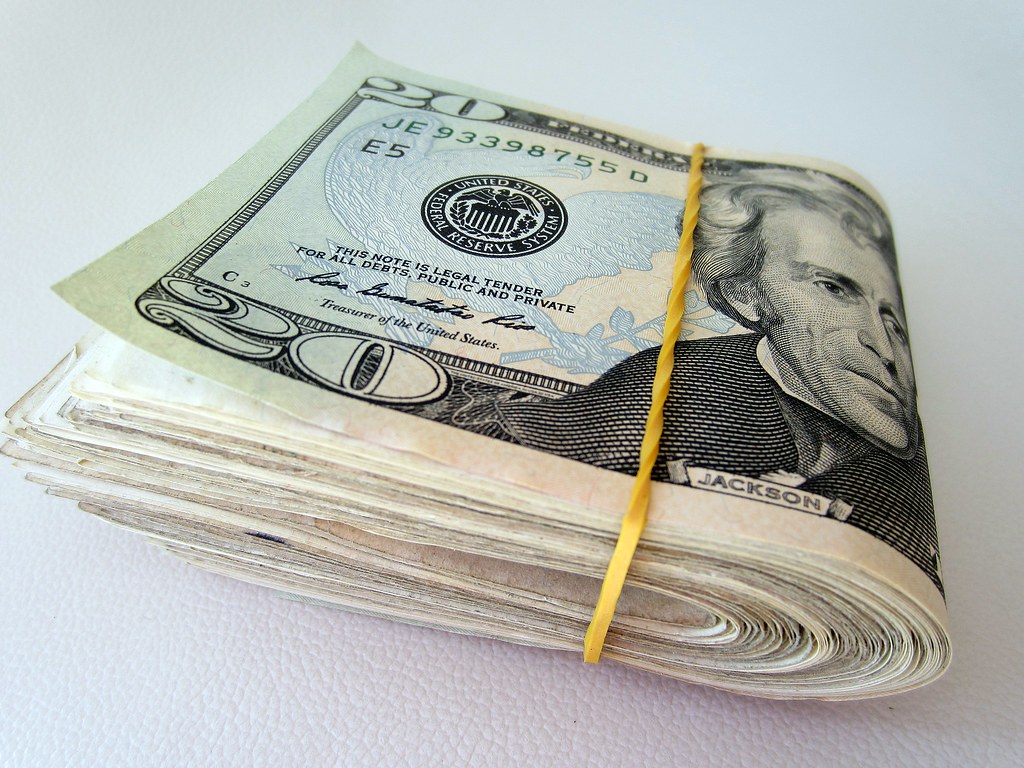This is the first in a series of posts about money. Your Money. On the surface level, it’s pretty simple. You work a job, money comes into your hands. You’ve got bills, money leaves your hands. If you spend less than you make, you’ve got savings. If you spend more than you make, you’ve got debt. In the most basic way, we’re all playing the same game.
The problem is that most of us don’t realize we’re playing this game.
We don’t know the rules, the tactics, or the strategies. We don’t acknowledge our bias, we don’t even know that we have bias. The result? We’re all still playing the game, we’re just playing it poorly…
…and we’re playing it poorly on autopilot. We can’t win a game that we don’t understand.
Why You Suck With Money
On the most basic level, we take care of the problem in front of us. We eat when we’re hungry, find heat when we’re cold, and sleep when we’re tired. We’re wired to focus on the concerns of the day because this keeps us alive.
Taking care of next month’s problems take a little thought, next year’s problems take some planning, and the next decade’s problems takes some serious education.
Chances are the choices you are making with your money work for today. They probably work for next month too. The problem is that the further out into the future you look to, the more likely the spending habits you have now conflict with the habits you’ll need to fund the future you’ll actually want.
Make no mistake about it, bad spending habits will sink you.
Choices you make today will determine if you retire to the ‘Good Life’, or end up drowning in debt.
How You Build Savings
The first skill to learn is how to save money. There’s two basic ways to grow your savings; either you need to earn more money, or spend less money. Spending less is the low hanging fruit – you can learn to do that today.
Building savings teaches you to think about the future. It’s the first step to getting out of debt, learning to invest, and building wealth. It’s a habit that will affect your day-to-day choices as well as your long-term ones.
There are two components to our bad spending habits.
First, we’re surrounded on all sides by advertising, billions of dollars worth. You may think it doesn’t work, but think of it this way, if even 1% of advertising is effective, that means there are millions of dollars messages trying to convince you every day that you want to buy something, and that it is your idea.
Second, every year companies find more ways to make it easier for you to spend your money quickly. Credit cards, payment plans, and automatic billing all make it easier to spend your money without stopping to think.
The result? You become addicted to instant gratification. That’s a problem. The instant gratification part of your mind doesn’t care about your future. It doesn’t care if you want to buy a house, or if you want to get your kid into a good school, or if you want to retire somewhere you can see the ocean.
We need to reprogram ourselves to stop letting instant gratification make our choices, and start turning on the part of our minds that want to play the long-game.
The Exercise: Just Wait
Much of what we spend our money on is disposable. You hand over your money, you get the thing, and it’s gone. Other purchases stick around longer, but they wear out and become less valuable. You will need to spend your money on some of these things, but not nearly as many as you think you do.
The more of these things you buy, the less you’ll have to save. Instant gratification is strong in the moment, but dies quickly. It’s in that moment your long-game mind has a chance to kick in. It will automatically start to ask, do I really need that thing? Is buying this going to take away from something else I want more?
Every time you see something you weren’t planning to buy ahead of time, use the rule of ‘Just Wait.’
- If it costs less than $20, just wait an hour before you buy it.
- If it costs less than $50, just wait a day before you buy it
- If it costs less than $100, just wait a week before your buy it.
- If it costs less than $1000, just wait a month before you buy it.
You get the picture. You can survive and thrive on much less than you think. The exercise is training you to think about the money you spend. You want to spend your money on things you really need, or things that you really want. Mercilessly cut everything else.
For a Gold Star
For a gold star, before you spend that money, take one minute and figure out how much you could be earning if you invested it instead. Pull out your phone, find the calculator, and pretend that money was earning you 6% (and trust me, you can do better than 6%, and we’re going to talk more about compound interest in the future).
$ Price x 1.06, hit the “=” sign.
Example: New leather coat costs $1000. Punch in 1000 x 1.06 and punch “=” one time (for one year). It becomes $1060 and you did nothing to make that money.
You have a minute to spare right? Punch “=” once a second for sixty seconds. That’s how much money you’d have in sixty years if you invested this money today. Try it and see what you come up with. Remember, you didn’t lift a finger to make that money. That coat still seem worth it?
Save your money, stop spending like an idiot.





Great article, the bigger question is how to you save when you have student loans and other debts such as a mortgage. Should you pay your debt first in order build a healthy saving or do you do it simultaneously?